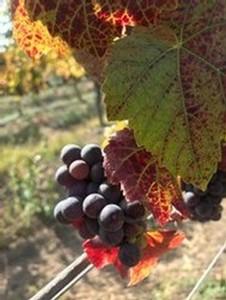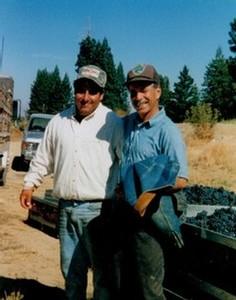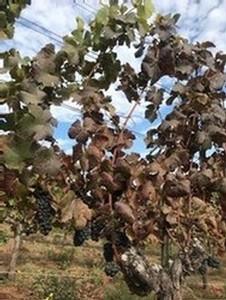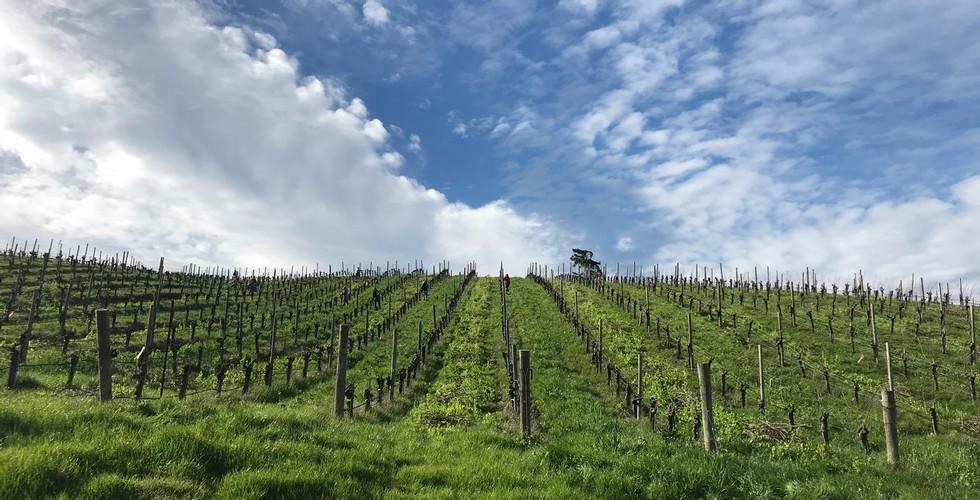By Jasmine Hirsch, July 2024
David Hirsch planted Block 5, in the heart of the East Ridge, in 1991. He took cuttings of our Pommard-Wädenswil field blend from The Old Vineyard and grafted it onto the then-popular AXR rootstock. Sadly, AXR would turn out to be susceptible to one of viticulture’s greatest threats, the disease phylloxera, which attacks the roots of grapevines, devigorating them, and eventually killing them.
Nine years after planting, Block 5 began to show symptoms of phylloxera. The disease moved slowly, however, and as time went by, David worked out practices to promote root renewal. As he says about Block 5: “We loved the vines, so we decided not to replant them, and instead to farm with the phylloxera.” Over the years, these practices allowed David and his longtime vineyard manager Everardo Robledo to not just keep the vines in Block 5 alive, but to produce some of the best wines from Hirsch.
Phylloxera devigorates vines, inhibiting photosynthesis and slowing sugar accumulation. Because of this, yields must be kept small, to ensure the vines have the energy to bring grapes to ripeness.
Block 5 has some of the lowest yields at Hirsch, about 30% lower than average, and it requires intensive and meticulous vine-by-vine farming.
The shallow soils of the steep-sloped vineyards of the East Ridge present additional challenges. As phylloxera impacts the roots of a vine, anything that further impedes the uptake of nutrients, like poor soils, can hasten the disease’s spread. Therefore, these fields receive extra compost every year, and this is one of the first areas where we transitioned to no-till farming, with the goal of preserving top soil on these steep, mountainous slopes.
The low yields in Block 5 contribute to the fruit density of the wines. And the shallow soils of the East Ridge result in some of our most structured wines, with mountain tannins and great cellaring potential.
After the 2021 harvest, we made the difficult decision to tear out 1/3 of these old, gnarled vines and begin anew. (The remaining 2/3 will be torn out after the 2025 harvest.) Everardo helped David plant Block 5 in 1991, and he insisted that he be the one to tear them out. Now, in 2024, he is working alongside David to replant it.
For more of the history of the East Ridge, please see David’s essay here.



The 2021 Block 5 Estate Pinot Noir
2021 is arguably the greatest vintage we have yet seen at Hirsch, producing wines of structure, fruit concentration, complexity and age-worthiness. The eastern portion of Block 5 produced a peak encapsulation of those qualities. The field yielded seven barrels in 2021; we decided to bottle three of those barrels as our first ever Hirsch Block 5 Estate Pinot Noir. The remaining four barrels went to the 2021 East Ridge Estate Pinot Noir.
In its youth, the 2021 Block 5 is remarkable for its massive structure, matched by an incredible density of fruit. The tannins are chewy and prominent, yet balanced and supported by the glossy, concentrated fruit. As befits its East Ridge origins, the fruit is dark and savory, with notes of blackberry, pomegranate, anise, dried cranberry, sage, mint, wet stone and a hint of leather. Upon release [Winter 2024] the wine is in a quiet phase, and we strongly recommend cellaring it for at least 3-4 years before drinking.

As this field was torn out after the 2021 harvest, it will be some years before we will be able to consider another bottling of this wine. We look forward to bringing you a second Block 5 in a few decades!
